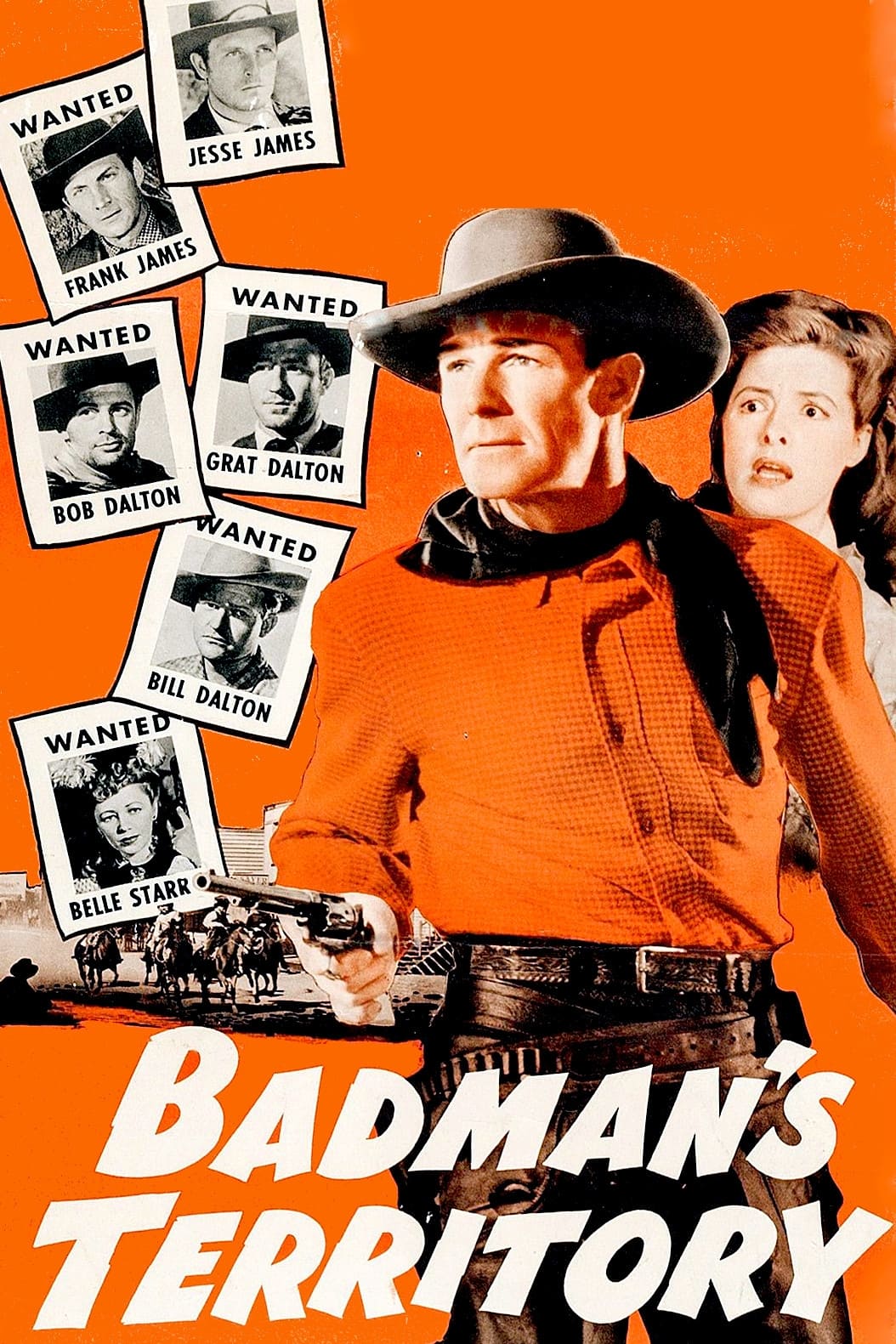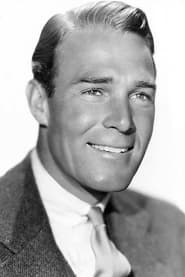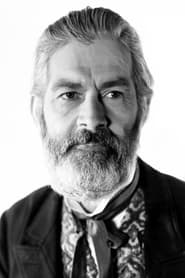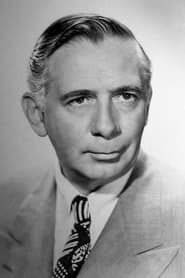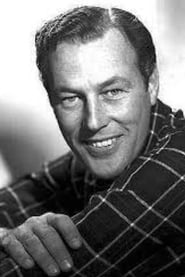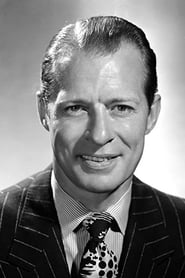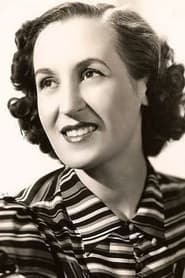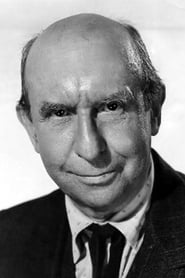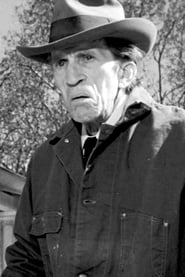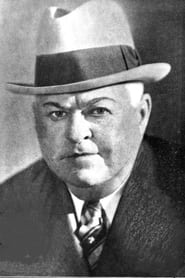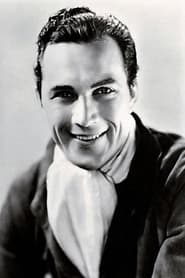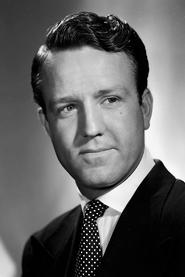Cast
View AllRandolph Scott
as Sheriff Mark Rowley
Ann Richards
as Henryetta Alcott
George 'Gabby' Hayes
as Honest Jim Badger / The Coyote Kid
Ray Collins
as Colonel Farewell / Narrator
James Warren
as Deputy John Rowley
Morgan Conway
as Captain William 'Bill' Hampton
Virginia Sale
as Meg
John Halloran
as Hank 'Mac' McGee
Andrew Tombes
as Doc Quillan
Richard Hale
as Ben Wade
Harry Holman
as Hodge
Chief Thundercloud
as Chief Tahlequah
Lawrence Tierney
as Jesse James
Tom Tyler
as Frank James
Steve Brodie
as Bob Dalton
Crew
Director
- Tim Whelan
Producer
- Nat Holt
Reviews
John Chard
You can't clean up Quinto with printers ink!
Badman's Territory is directed by Tim Whelan and written by Jack Natteford and Luci Ward. It stars Randolph Scott, George Hayes, Ann Richards, Ray Collins, James Warren, Morgan Conway, Virginia Sale and John Halloran. Music is by Roy Webb and cinematography by Robert de Grasse.
The area known as Badman's Territory is a sort of no mans land not yet governed by statehood. No law resides there, the citizens themselves run the area, so as it stands it has become a safe haven for the outlaws and ragamuffins of the West. Into the Badman's Territorial town of Quinto comes lawman Mark Rowley (Scott), who after trailing his injured deputy brother into the area, finds a town bursting at the seams with political intrigue.
A lively Oater out of RKO, Badman's Territory is only really guilty of cramming too much onto its plate of beans. The town of Quinto is home to some of the Wild West's most notable criminals, such as The James and Dalton Gangs et al, it's also home to many shifty politician types, Indians (as it's their land), business men, a leading lady of the press (Richards) and of course Randolph Scott and his bro played by James Warren.
The writers take these character threads and try and weave them all together into a cohesive whole, thus we get an outlaw backdrop that never really materialises, a power of the press motif that apparently needed a romantic angle to push it along, and the looming annexation of the area into the Union provides the heartbeat of the story but comes off as a complex narrative piece since so much is going on. While director Whelan is required to insert a horse race, a square dance and the obligatory shoot-out to ensure nobody is bogged down by the ever present politico chatter.
Scott is as always splendid in this environment, a natural, while Richards does fine work with a pleasingly strong female lead role. "Gabby" Hayes provides the lively comic relief and Conway is suitably oily as crooked lawman William Hampton. However, again because there is so much going on, supporting actors like Lawrence Tierney and Steve Brodie (Jessie James and Bob Dalton respectively) barely get time to impact on proceedings. Which since this is called Badman's Territory is a bit of a bum steer. But in spite of the too many cooks spoiling the broth theme at work, it's watchable stuff and definitely one for Randolph Scott fans to seek out. 6/10
Feb 10, 2017
Thematic Analysis
Badman's Territory represents a fascinating example of cinema, offering viewers a unique perspective on the human experience and societal structures. The film's approach to its themes demonstrates a creative vision that distinguishes it within its genre.
Director Tim Whelan brings their distinctive visual style to this film, continuing their exploration of themes seen in their previous works while adding new elements. Their approach to pacing and visual storytelling creates a viewing experience that rewards close attention.
Released in 1946, the film exists within a cultural context that now offers viewers historical perspective on the social issues of that era. Its reception demonstrates the diverse reactions to its artistic choices and its place in cinema history.
Did You Know?
- The production of Badman's Territory took approximately 34 months from pre-production to final cut.
- Several scenes were filmed in multiple locations to capture the perfect setting.
- The screenplay went through 8 major revisions before the final shooting script was approved.
- Some visual effects sequences took up to 9 months to complete.
Historical Context
- In 1946, when this film was released:
- Rock and roll music was revolutionizing popular culture.
- The Cold War was intensifying, influencing global politics and culture.
- The film industry was dominated by major studios, with independent cinema still in its early development.
How This Film Stands Out
While Badman's Territory shares thematic elements with other films in its genre, it distinguishes itself through its unique approach to storytelling, visual style, and character development.
Unlike Thunderbolt and Lightfoot, which focuses more on action than character development, Badman's Territory offers a fresh perspective through its innovative visual language and narrative structure.
While films like Colorado Charlie and Django the Condemned explore similar territory, Badman's Territory stands apart through its distinctive directorial vision and pacing.
This film's unique contribution to cinema lies in its thoughtful balance of entertainment value and thematic depth, making it a valuable addition to its genre.
Details
- Release Date: May 4, 1946

